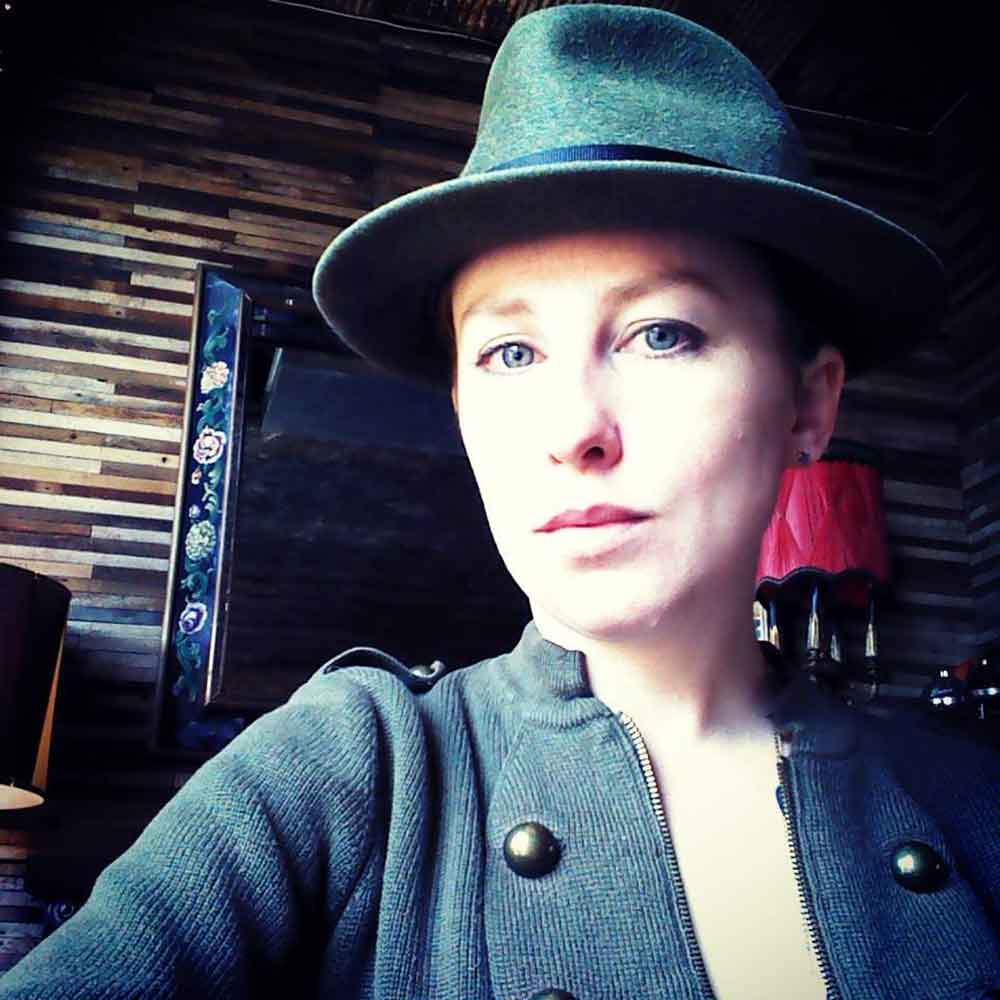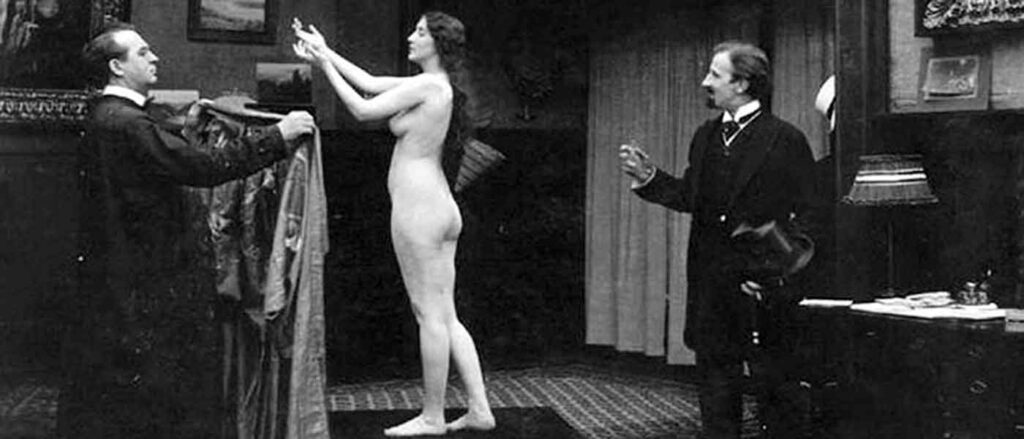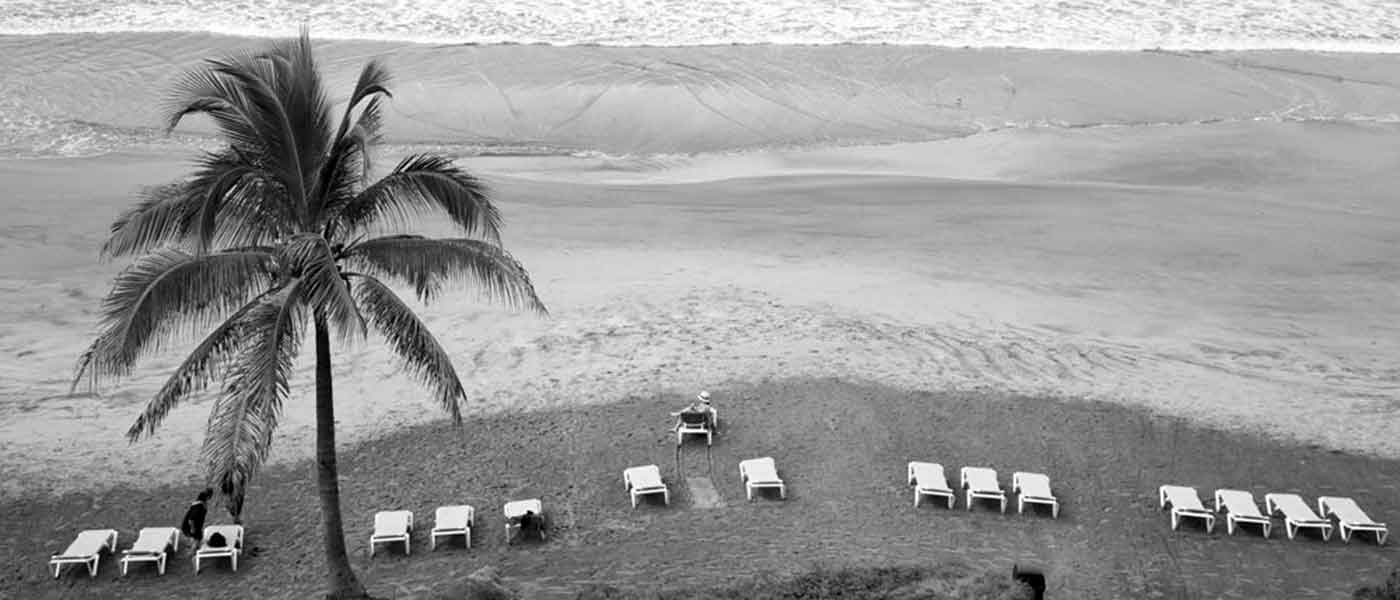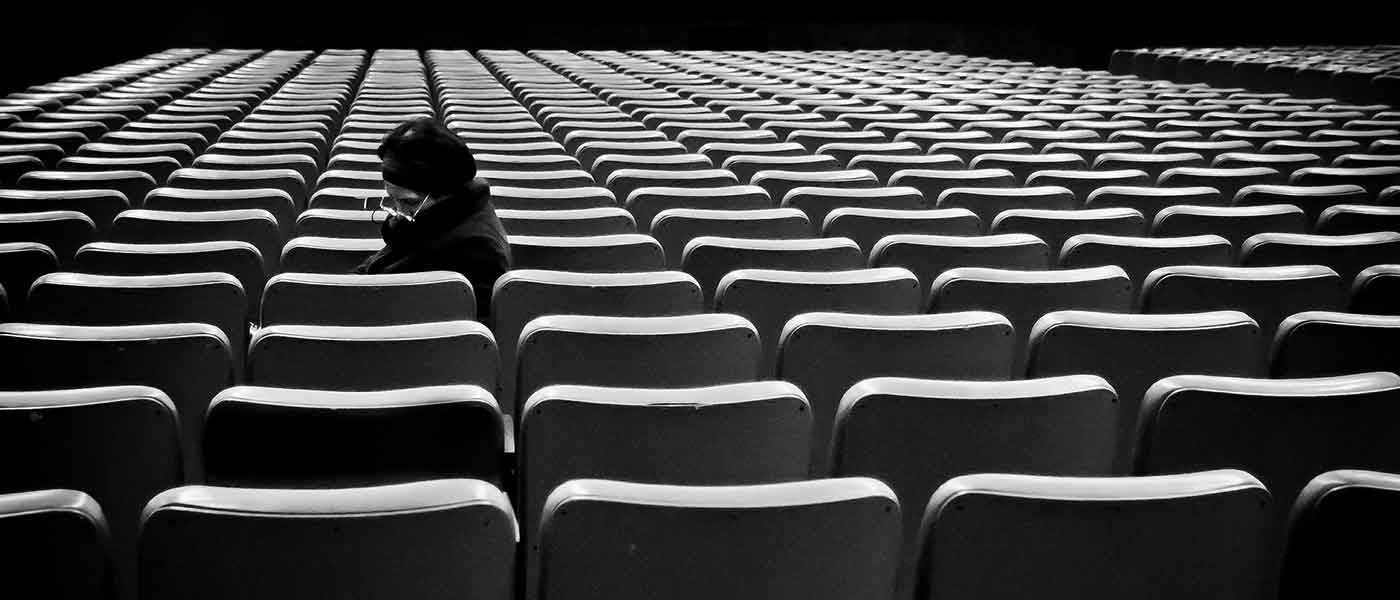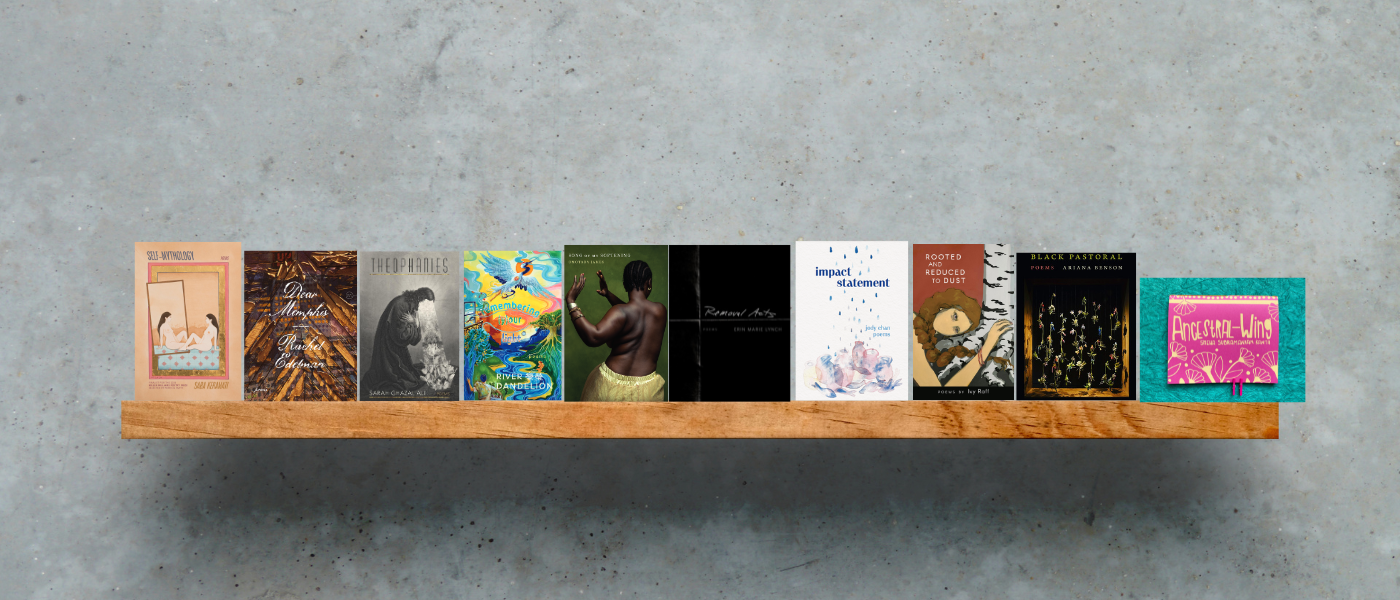When we were fourteen, we were noticed.
I, naked in the forest, rubbing against fallen trees,
was confronted by a stag —
startled still; urgent white breath;
mucus hanging, perilous, from his mouth.
We regarded one another and I saw my pale flesh in his eyes,
tears pooling in my collarbones.
I thought of a woman.
Audrey, in daily dress and heavy hat,
watched herself, not the wares
in the window on Fifth Avenue.
The photographer, cheeks flushed at
Athena peering out from her pupils,
watched her, too.
She smiled through the thick city air.
We learned
but never said
that existence is realized
in the slow drag of eyes along the body.
We are made human by it.
Our memories, our selves, began
when we saw ourselves reflected.
Audrey picked up the habit —
and I, too, a century on —
of never saying no.
This is how you get ahead, of course,
but it has also been, and will remain,
a forearm raised to block.
In the freedom of yes
we ascend as dust motes in the sunshine of watching,
this rising more livable than temperance,
and so we are swept along
and think of it as floating.
Nicknamed “Miss Manhattan,” “American Venus,” and “The Perfect Woman,” Audrey Munson was the most famous art model of the Beaux Arts period. Her likeness, as created by the greatest artists of her time, graces bridges, monuments, building facades, and fine art museums around the world, with concentrations in New York and San Francisco. She was blacklisted at age thirty after her name was implicated in a murder scandal, and at forty remanded to a mental institution, where she lived until her death at 104 in 1996. You can read more about Audrey Munson here.
